Weddings in Mangalore are a beautiful, rich tapestry of traditions that differ tremendously by religion and sects and sub-sects within each religion. For this post, I’m focused on Mangalorean Catholic weddings since I belong to this community.
If I could sum up Mangalorean Catholic weddings, I’d say that they’re all about lively brass band music, non-stop dancing, and bottomless wine! They usually consists of three days of revelry, meaningful traditions and plenty of family.
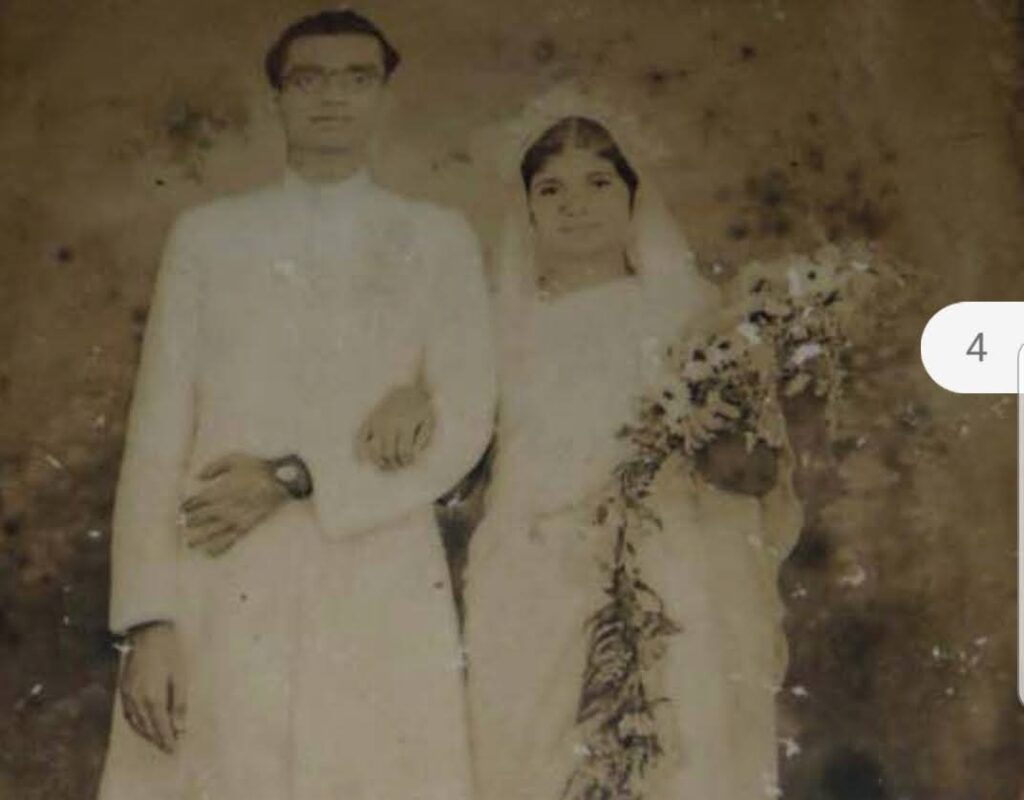
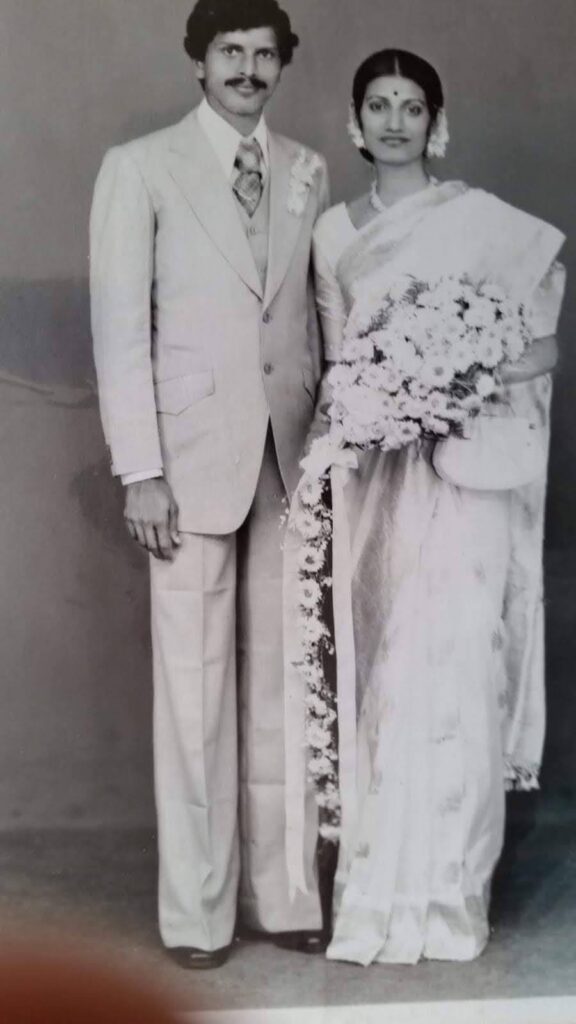
So, let’s look at how a traditional Mangalorean Catholic wedding usually goes down:
Day 1: The “Roce”
The word “Roce” is Konkani for coconut milk. The Roce is a fun family get-together held a day before the wedding. The goal of the event is for close family and friends to give their blessing to the bride and groom using coconut milk. While giving their blessing, the women in the family sing traditional folk songs called “Voyos” that are unique to the Roce. Voyos are super fun because they’re short haikus that poke fun at the bride and groom!
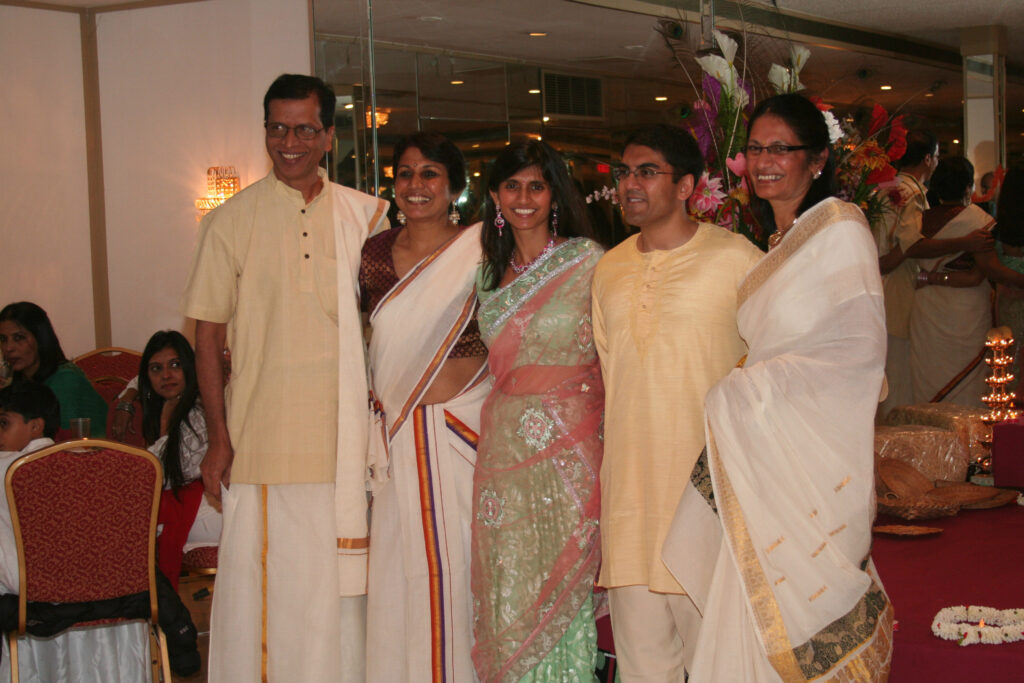
Of course, Mangaloreans being the brassy ones that they are, the blessings usually involve not only coconut milk, but also beer, eggs and just about anything that young cousins and friends can get their hands on. After the blessings, it’s nothing but dancing and drinking well into the night.
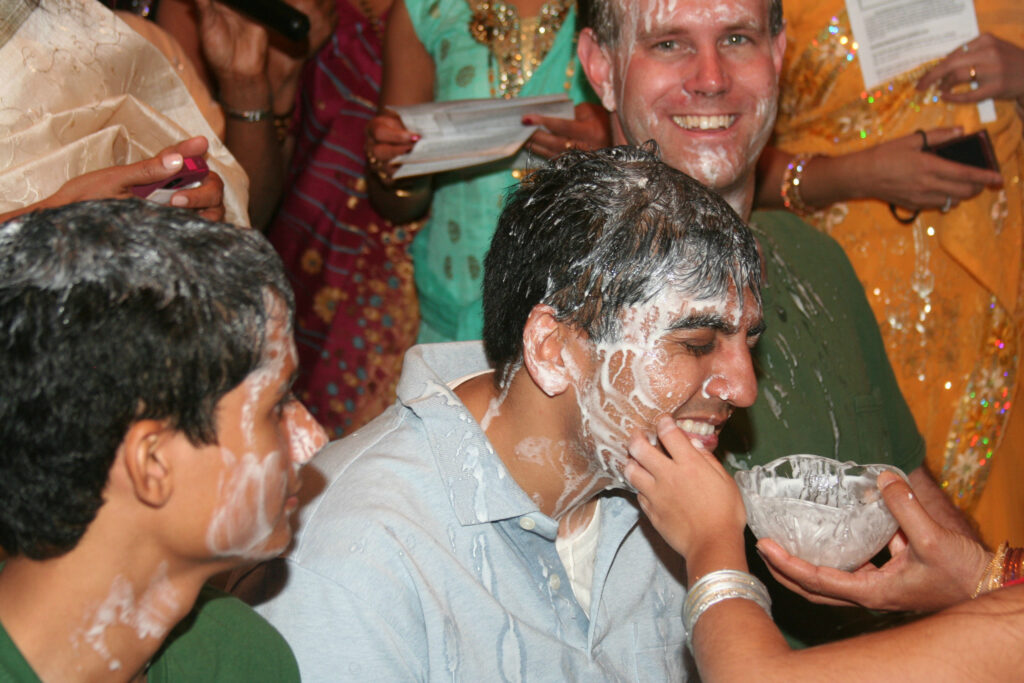
Day 2: The Wedding
The day of the wedding is similar to any Catholic wedding around the world but there are a few Mangalorean traditions that I’ll highlight here.
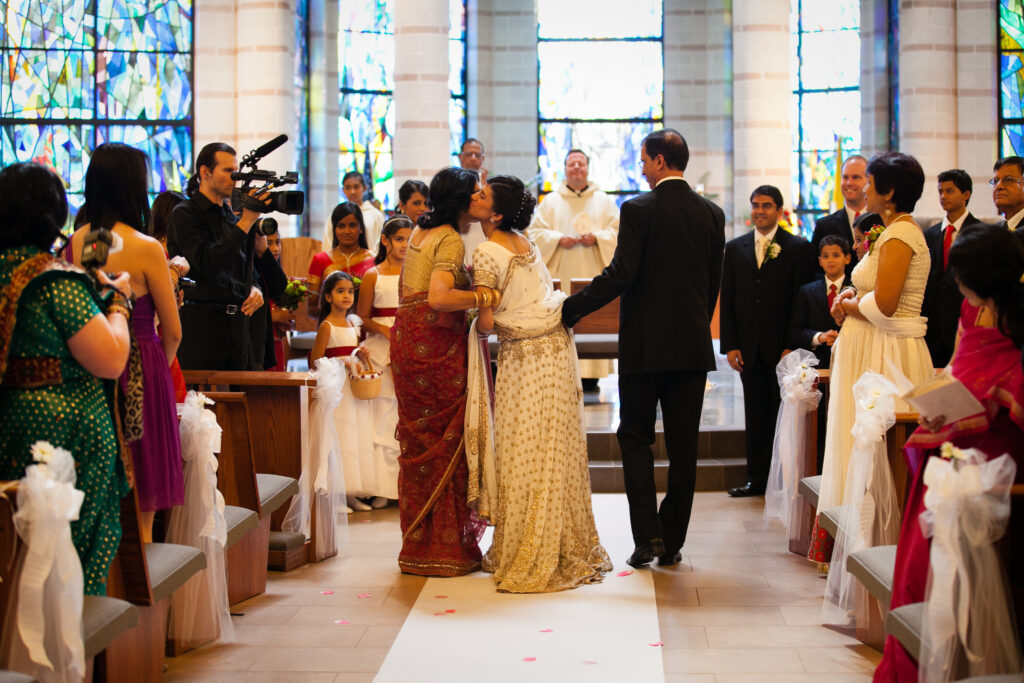
Before the church ceremony, the elders in the family gather together at the home of the bride and groom (respectively). The bride/groom stand in front of the altar (a little space in the home where Catholic idols are displayed) and the elders give the bride/groom their blessing one by one — a sign of the cross on the forehead. Although this is a simple ceremony, it is usually solemn, meaningful and gives the bridge and groom a chance to breathe and take it all in before the big ceremony.
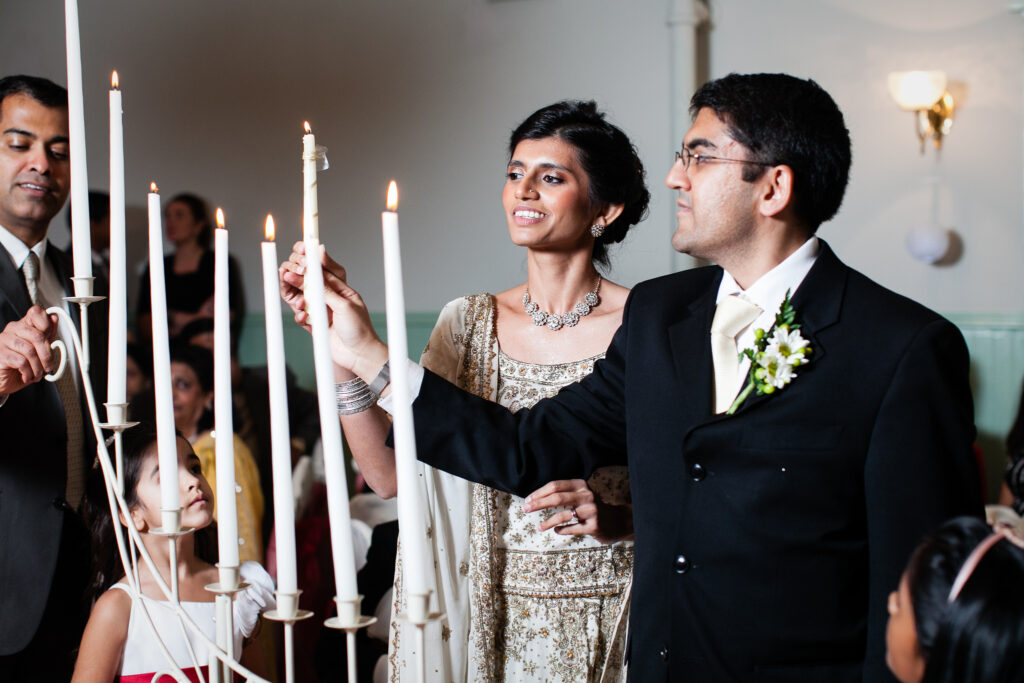
During the wedding reception, the bride usually does a change of outfit, from the white gown to a traditional red saree known as “Sado” along with white jasmine and orange marigold flowers for the hair. The women close to the both the bride and groom usually whisk the bride away to a room where they help her get changed into the Sado. While helping the bride wear the Sado, the women will sing very traditional folk songs that have been passed down for generations.
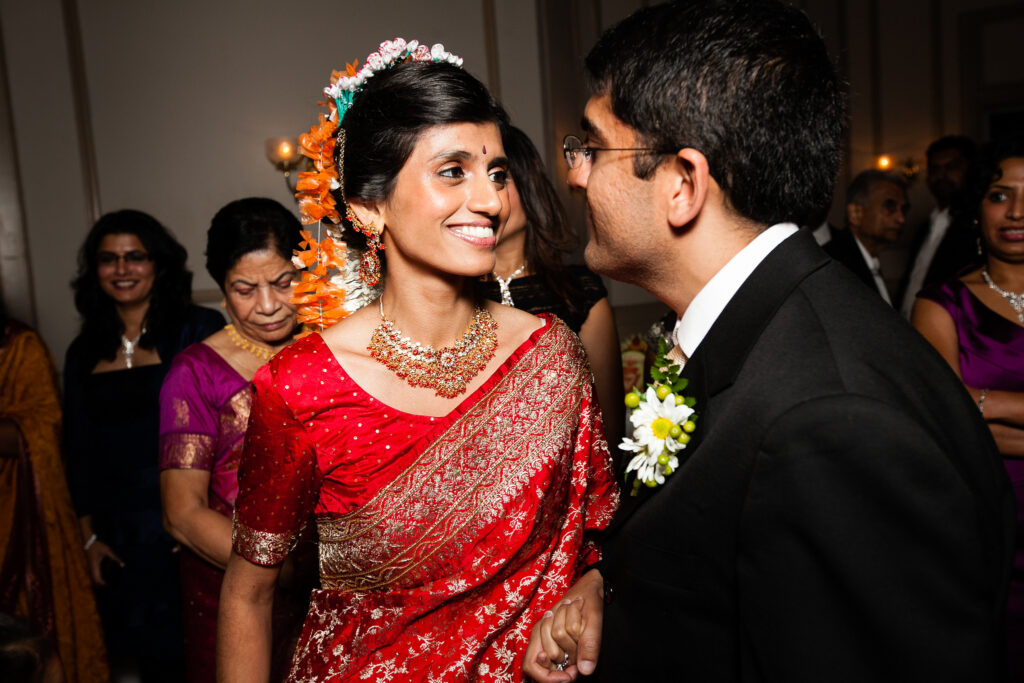
After the bride makes her grand reappearance in her Sado, the groom ties a “Karyamani” around the bride’s neck. This is a traditional Mangalorean necklace, made of black and gold beads that symbolizes the couple’s union.
A typical Mangalorean wedding reception is always bursting with dancing and music and most importantly, an open bar! It is common for a live band to play at weddings, and they’ll typically play American and British music that spans the decades. And there will always be “Baila”, a traditional Mangalorean folk music genre that gets everyone on their feet!
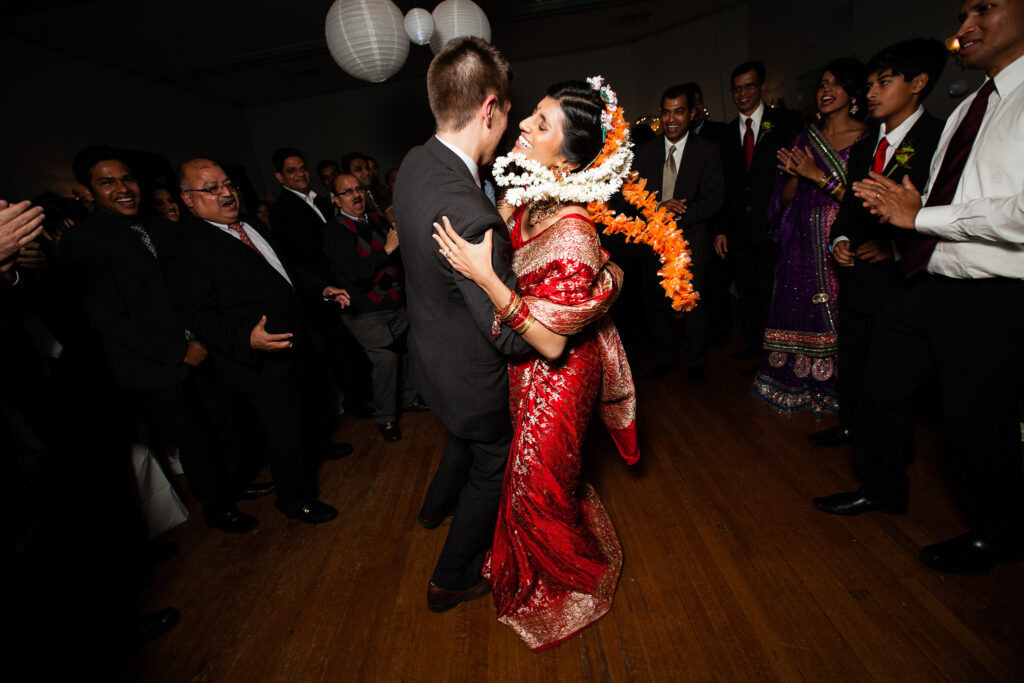
And at the end of the wedding reception, as a blessing for the newly wed couple, close family and friends usually close out the evening by singing a Latin hymn called “Laudate Dominu“. And then close friends and family head out for the after party!